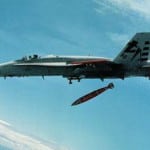
As the Defense Department rolls out pieces of its Third Offset Strategy, it could benefit by taking a second look at the recent conflict in Ukraine, the vice chairman of the Joint Chiefs of Staff said Thursday.During fights in Crimea and in the Donbass region of Ukraine, Russian-sponsored separatists employed a very capable ground force with rapid command-and-control and electronic warfare capabilities that they used to control the timing and pace of the battle, Air Force Gen. Paul Selva said…













